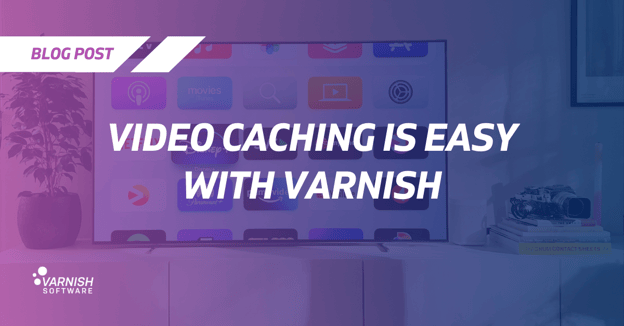Closing out the days of 2017, I asked some of my colleagues for their predictions heading into 2018 - where is technology going? Which current trends will continue toward the mainstream, and which will fizzle out as unsustainable? Are some buzz terms, such as edge computing, figuring into the future, or are they mere building blocks to bigger and better things?
It turns out, though, that most of our Varnish family of engineers is a bit reticent about making public predictions. They have their fingers on the pulse but also have their hands busy working on Varnish, of course. That said, I got a few comments, ranging from the definite continuation of the video-streaming boom to the growing ease and convenience of cloud computing and developing your own delivery platform. There was also some discussion about the caution surrounding HTTP/2, waiting for HTTP/3 and the implications of this - but that’s another discussion.
As Varnish’s tech evangelist, though, it’s my role not to shy away from forward-looking predictions and analysis. I recently shared a piece via LinkedIn and will discuss some similar predictions and ideas here. Still, these are my personal views (not official Varnish positions) and I’d like them to be a catalyst for discussion.
- Edge is out: With regard to the edge, it’s all moving toward less talk, more action. I think the “edge trend” is weakening in the sense that hype and talking about it has died down, while actual adoption is slowly underway. We are at the point where discussion is over, and companies are budgeting their architectural changes for 2018-19. For now, some simple changes to be edge compliant are possible but won’t necessarily take full advantage of the edge. For example, implementing Edgestash, a Varnish feature that does page assembly at the edge of the network, is straightforward and significantly speeds up content delivery. This can be considered a smart edge implementation. But it will probably be a little while before entirely new platforms are edge-native or are planned as edge-only. In many ways, the edge is only an enabler for many of the technologies that will come in the near future as logic moves closer to the edge and enhances mobile web performance, among other things.
- Ch-ch-changes - GDPR in Europe and US net neutrality: GDPR adoption is and will be high-priority for any European country (and in fact any company that does business in Europe). By May, data processing and handling will have to be GDPR-compliant, which has meant that many other projects and implementations have been delayed and changed until they are fully GDPR-compliant. Its complexity and reach have created a great deal of work for companies both within and outside the tech sphere, and will require time and resources that would otherwise be used elsewhere. Less well-formed or understood fully is the American FCC’s vote to end net neutrality in the United States. It is unclear whether or how this repeal will actually take effect, given its massive public unpopularity and the political and public interest groups actively filing legal suits to stop the change. It’s difficult to make predictions about how this will change anything when the situation still seems to be in flux.
- CDNs: Content delivery networks will continue to flourish, particularly in cases where companies can combine commercial CDNs with private ones to build a hybrid solution that matches their specific needs more precisely. The idea, of course, is to gain more control over one’s own content and the logic governing how, when, to whom and from where it is delivered. More flexible options are springing up to put this control back into companies’ hands.
- Up in the cloud: For most needs, “the cloud is the new hardware”. Skip the cables and servers and instead just pick a cloud provider, which will for most be cheaper, easier, readily ‘maintainable’ in that there is little to no maintenance and like the flip of a switch to scale up or down to accomplish most of what is needed.
- Streaming: Live streaming, VoD and OTT will continue to grow exponentially. With this in mind, we have to consider that storage needs might grow, and along with that, costs.
Bottom line: I expect that the first half of 2018 will be dominated by CDNs, edge computing and security as hot topics, which will evolve as the year progresses. What do you think? Anything you foresee about 2018 technology and Varnish that you’d like to share/discuss?
/VS-logo-2020-197x60.png?width=136&height=60&name=VS-logo-2020-197x60.png)




